Ping ChipR Review – The Secret to Better Chipping?

DISCLOSURE: THIS POST MAY CONTAIN AFFILIATE LINKS, MEANING I GET A COMMISSION IF YOU DECIDE TO MAKE A PURCHASE THROUGH MY LINKS, AT NO COST TO YOU. PLEASE READ MY DISCLOSURE FOR MORE INFO.
Chippers divide the golfing world. Love them or hate them, a chipper can save golfers vital shots on the course. For those who struggle with chipping around the green, chunking and blading chips regularly, the Ping ChipR offers a solution.
As you may have read in our comprehensive Chipper Review, the Ping ChipR came out as the best chipper in 2024. But why?
I’ve owned a Ping ChipR for 12 months now, in this article, we’ll look at all the reasons this ingenious club can help a golfer to improve their scores.
Don’t want to read the full article? Skip straight to the section you want here:
- Ping ChipR Specifications
- Putting Technique
- ChipR Length
- Nippon Z-Z115 Shaft
- Ping ChipR Grooves
- Chipper Grips
- Cambered Sole
- Clubhead Feel
- Ping Colour Codes
- Ping ChipR Le
- Women’s ChipR Le Specs
- A Chipper Is Embarrassing!
- Is a Chipper a Waste of a Club?
- Summary – Would I Put The ChipR in the Bag?
Let’s start by looking into the details.
Ping ChipR Specifications
The ChipR is the latest chipper from the Arizona-based global golf giant Ping. It is inspired by the previous Ping Chipper the Ping Chipo first launched in the late 1970s.
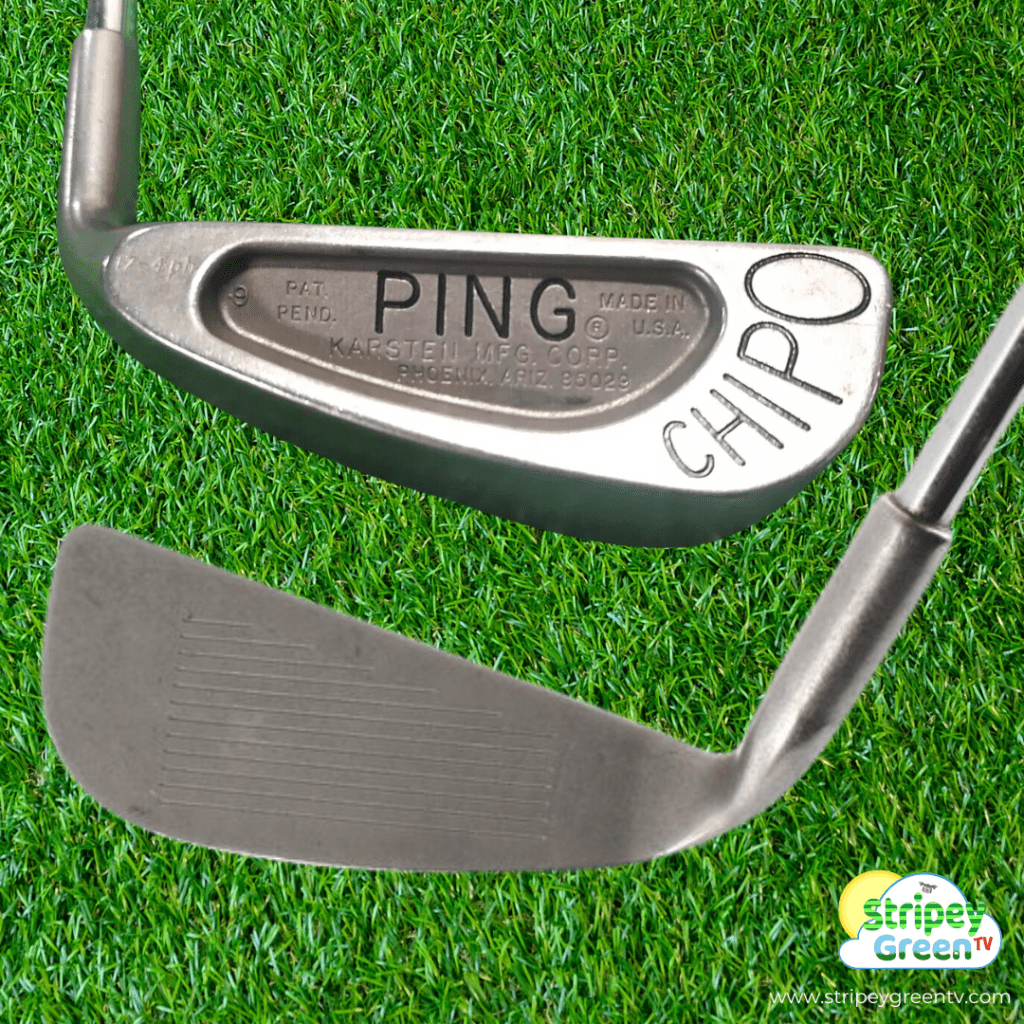
As you can see in the image above, the original Chipo had a long, narrow face. It looks more like a club that Happy Gilmore would use to send his ball home.
Fast forward 50 years to the new ChipR, released in 2023, this club looks much more like a traditional wedge or iron. The first difference I noticed is the text on the clubhead. In the 1970s it was typical for the branding to be able to read when the club was in the address position. Nowadays manufacturers realise that clubs spend a lot more time upside down in a golf bag and therefore put the branding “upside down”.
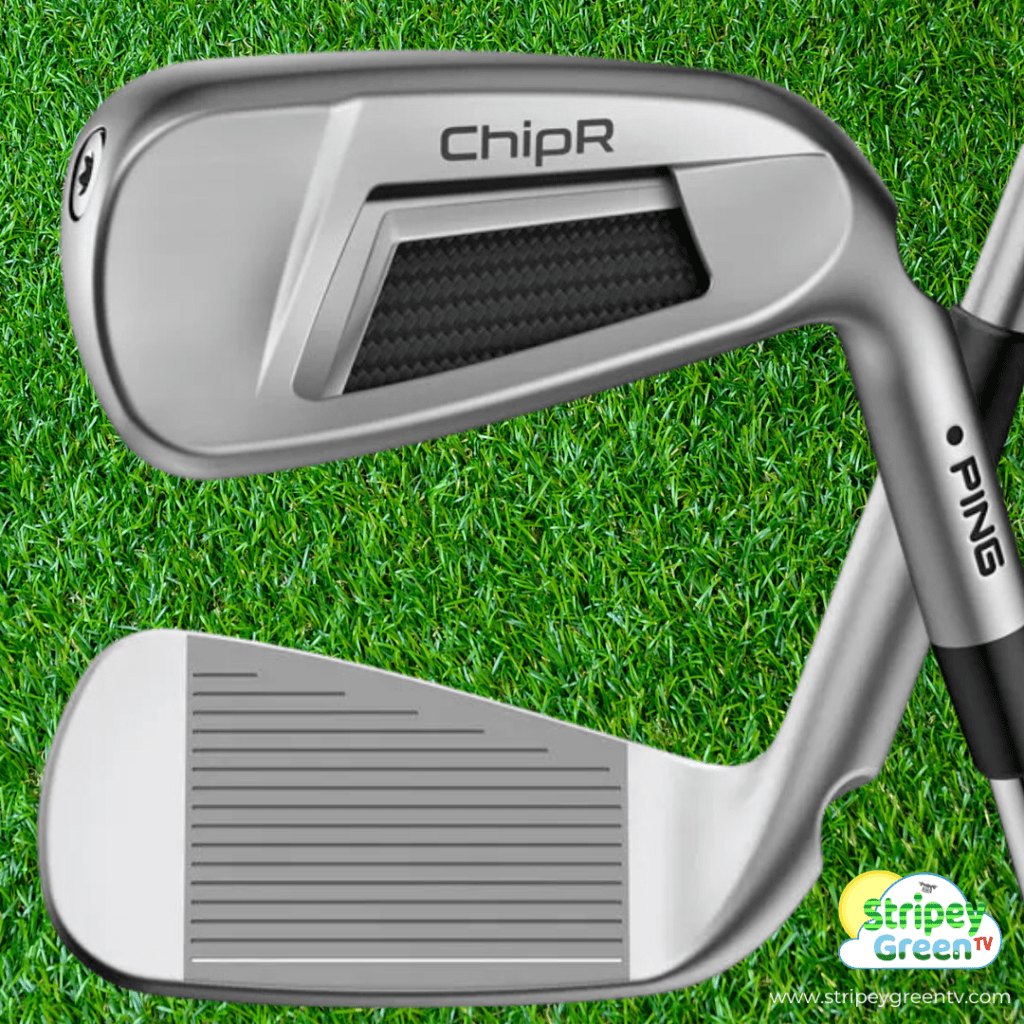
Aside from the branding the ChipR club head has a very different look to it. The face looks very similar to the latest Ping Irons in terms of size and groove layout. These are the exact specs of the standard Ping ChipR:
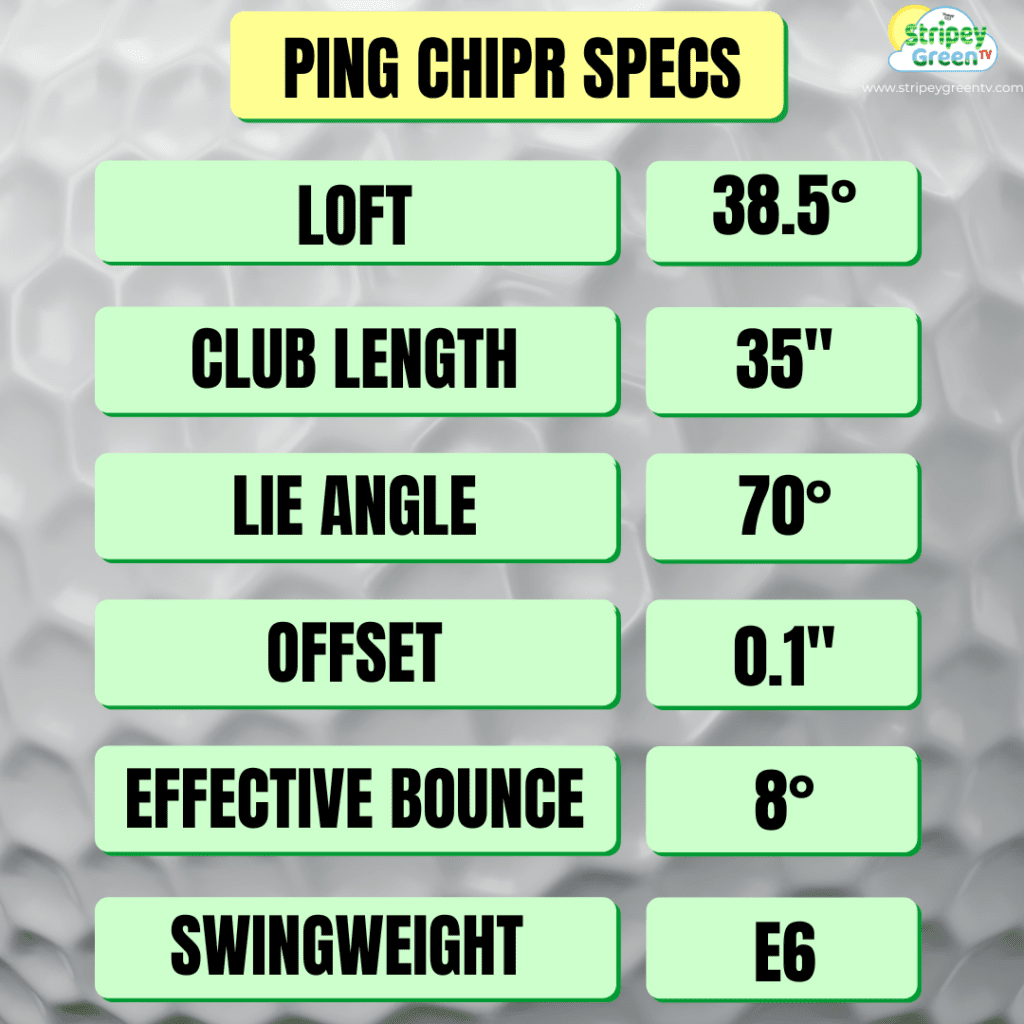
Putting Technique
For reference, the loft of 38.5° sits in between the loft of my Ping G410 8 and 9 iron (34.5° & 39.5°). The ChipR is much shorter though, around 1.5″ in total. The shorter length allows golfers to stand closer to the ball and use more of a putting technique. The Chipr is designed to be used with a putting-like stroke as opposed to the normal technique a golfer would use for chip shots. This is why it has been made shorter at 35″, more in line with the length of a putter.
When putting golfers should place their eyes over the ball to help with alignment. By utilising this philosophy with the ChipR, I found my chips to be much more accurate in direction than with my standard wedges.
ChipR Length
As I mentioned above, the ChipR has been designed as standard to be 35″ long to promote the putting stroke. As with any Ping club though the manufacturer recommends being custom fit and then you have the option to alter that length. Retailers should be able to allow you to select this club any length between 33″ and 37″ in ¼” divisions. It’s worth noting the ChipR Le (Women’s version) has a different specification. Click HERE to skip to that spec.
Nippon Z-Z115 Shaft
Again at any reputable equipment supplier, golfers will be able to select which shaft is in the ChipR, but the standard shaft is the Nippon Z-Z115. It is a lightweight shaft (111g) with a lower balance point to allow for more clubhead feel. The Z-Z115 are steel shafts.
The alternative that Ping offer is usually the Alta CB Slate which is a graphite shaft. Graphite shafts offer a little more flex which should give an ever so slightly higher launch.
Personally, due to the nature of the putting technique, I prefer a stiffer steel shaft with a firmer feel and less flex.
Ping ChipR Grooves
Ping has added more groves to the Chipr than you would see on a standard iron. It has 16 precision-milled MicroMax grooves in total. My G410 8 and 9 iron have just 14 grooves. Ping says that the tighter spacing between the grooves allows for increased ball contact which maintains spin for consistent trajectory and control on chips of every length.
They also state that the compact profile inspires confidence. I’m not sure about the latter point, but the new Ping Chipr does feel much more consistent than chipping with my 8 or 9 iron in terms of spin rates. I find with the 8 or 9 iron I have a much less reliable contact and the Chipr definitely gives more consistent trajectories and spin.

Chipper Grips
Depending on where you purchase your ChipR from there should be a good variety of grip sizes and styles available. I prefer a much thicker grip on my clubs and have used oversized grips now for the last 18 months. The ChipR lends itself to the thicker grip to further promote the putting technique.
As standard it comes supplied with a 360 Dyla-wedge Lite grip, which is ¾-inch longer than a traditional grip and features a reduced taper. The Dyla-wedge grip allows golfers to choke down for more versatility and trajectory control than with a traditional grip.
My choice of grip is the Golf Pride CPx Jumbo grip. I have these fitted to all my clubs other than my putter. Most reputable golf equipment suppliers will offer to fit any grip you desire to your ChipR. I would like to try the ChipR with a SuperStroke putter grip, I think that would be really interesting to see the results. Let me know in the comments below if you’ve tried this and how you got on.
Cambered Sole
The ChipR has a cambered sole ie it is curved from front to back on the underneath. This helps promote a smooth transition through the rough or fringe for maximum versatility and consistency. The clubhead also has a shallow face height (between a putter and wedge). The shallower height helps ensure reliable contact and performance than with a standard 7/8/9 iron.
Clubhead Feel
The clubhead on the ChipR has a very forgiving design. The stainless steel head is perimeter weighted which helps to give a more solid contact with mishit shots that aren’t from the centre of the face. Ping’s hydropearl chrome finish on the clubhead is designed to reduce friction with the turf. Not only that but it repels water well and also looks stunning!
The balanced weight distribution throughout the head and shaft offers a smoother and more controlled stroke. It is a much different feel to a bump and run with an 8 iron.
Ping Colour Codes
As with any Ping club the ChipR uses their colour code (color code for those in America!😃) to distinguish the lie angle. Ping started with their “color coding system” way back in 1972. The lie angle is very important, getting it right gives a golfer the maximum chance of hitting the ball correctly ie in the sweet spot. Below you can see how the Ping Color Code system works with standard clubs. The “color codes” offer a variety of lie angles from 5° upright to 4° flat.
A reputable club fitter will help you with this process. My irons are a white dot since I had an unusually upright swing when I bought my G410 irons. Since my iron fitting 3 years ago I have slowly flattened my swing out and need to have my clubs adjusted nearer to a black dot. This is a service Ping offer through their dealers and it is a VERY reasonably priced and speedy service. Last time I asked my local dealer the charge was just the carriage.
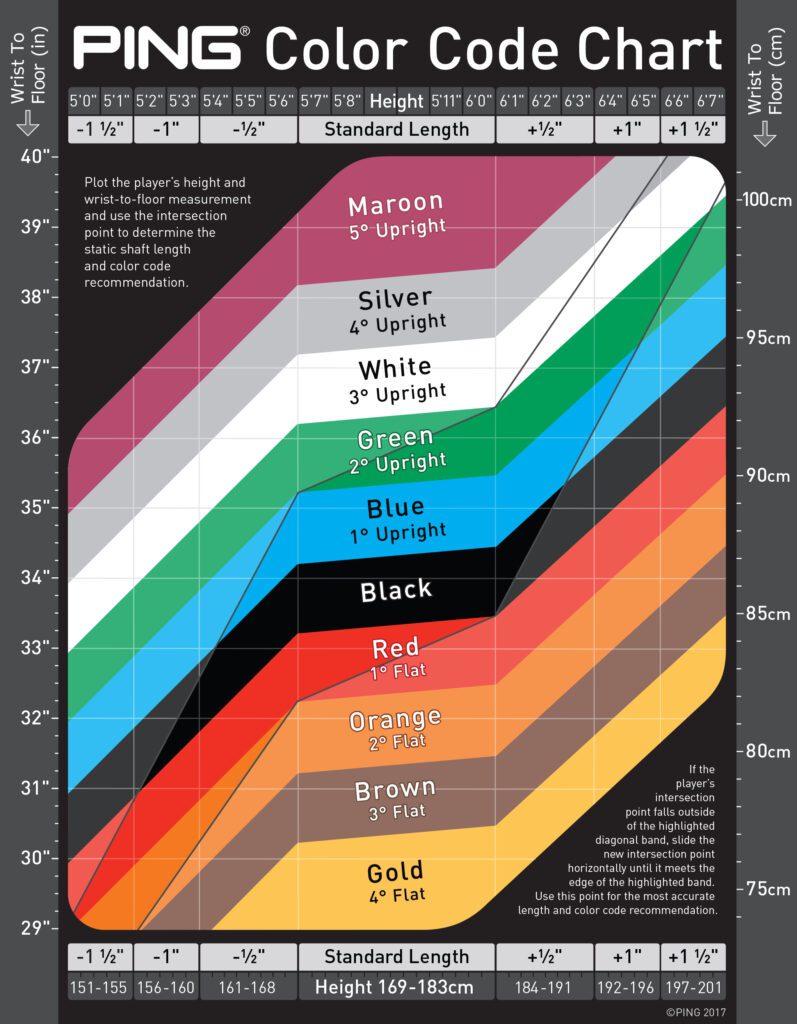
Bump and Run
The ChipR isn’t for every occasion. It is fantastic for a very consistent bump-and-run shot. The ChipR come into it’s own on flatter courses and courses with bigger greens. It does perform very well on short delicate shots though so it can be used on absolutely any course.
If you’re stuck behind a bunker and need to stop the ball very quickly then this club won’t be the solution. Since the flight is low it may also not be suitable for lots of shots on hugely undulating courses either where more height is required with chips.
Ping ChipR Le
Ping do things properly! Not only have they created a hugely customisable Chipper, but they also offer a variation for women golfers. It’s refreshing to see an equipment supplier think about women’s golf on a par, not just as an afterthought.

Women’s ChipR Le Specs
The women’s version of the ChipR, known as the ChiR Le has a very subtle specification change. As standard it comes an inch shorter at 34″ in length, and it has a slightly lighter swingweight.
Other than the slight clubhead change the other difference is it comes with a graphite shaft as standard. Ping offer the ULT Lite Graphite Shaft (52g) as standard or the Ultra Lite version (45g).
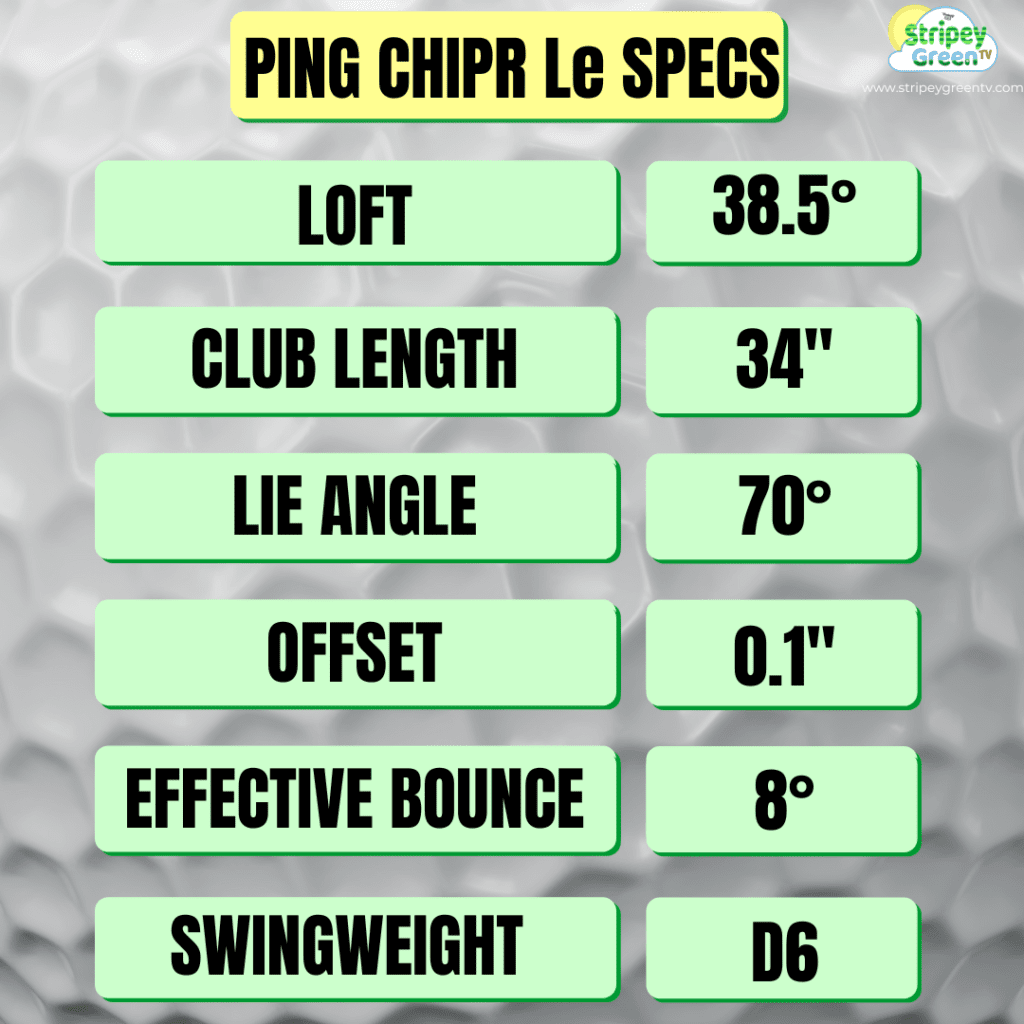
A Chipper Is Embarrassing!
There’s no denying that there’s a stigma behind using a chipper. If you’ve ever had one in the bag then you’re likely to have had a comment or two from other golfers about it. Chippers are historically known to be used by golfers that can’t chip using standard clubs. Traditionally they’ve always been quite lairy in looks and it’s really obvious for other golfers to see in a golfer’s bag or when they’re using it.
This is where the ChipR differs! The ChipR looks very much like a standard iron when sat in a golf bag. It wouldn’t be easy for a fellow golfer to see that you’re using anything other than a standard club other than your technique. I love this. Why should golfers be embarrassed to use a chipper?
Is a Chipper a Waste of a Club?
No! In my opinion, a chipper is not a waste of a club if it suits your game. For those who struggle chipping with standard irons and wedges, this is 100% a good choice to put in the bag. Yes, a golfer could have a more versatile club, but typically those who tend to chunk or thin chips will save shots by swapping a little used club out of the bag for a chipper.

Summary – Would I Put The ChipR in the Bag?
I own a ChipR and yes I do have it in the bag … some of the time. For context, I play off 12, I am a poor chipper but a good putter. The ChipR isn’t in the bag every week, but it does go in the bag if I’m playing flatter courses or when my chipping has been poor.
I would prefer not to have it in the bag. For me, the answer is to have a more versatile club such as an extra wedge, but that doesn’t mean you shouldn’t try it. The ChipR could make that tiny improvement that takes you from 3rd in a club competition to first. It is a sensible short-game solution for anyone who isn’t a very strong chipper.
If I’ve chipped poorly on a Saturday and don’t have time to fix this between then and the next competitive round, then I’ll put the chipper back in the bag. The perfect solution would be for me to hit 500 practice chips in between the two rounds and fix my issue, but golf is my hobby, not my job and normal life often restricts my practice time. That’s when the ChipR goes in the bag!
TODAY’S BEST DEALS:
If you’re not short game isn’t up there with Phil Mickelson’s then I would urge you to try the Ping ChipR. It could well be your secret to better chipping and lower scores. The ChipR will help a lot of golfers!
Bye for now!

Ping ChipR Frequently Asked Questions
Can I take full swings with a ChipR?
In short, Yes! The ChipR has been designed for shorter shots within 40 yards but it can still be used for a full swing. Due to the design though it may not give as good results as a traditional pitching wedge or iron.
Is the Ping ChipR legal for competition / tournament play?
Yes. The Ping ChipR confirms to all the rules of golf so there is no reason why you should not be able to use it in competition. There are other chippers on the market, such as two-sided chippers that aren’t suitable for use in competitive conditions.
How far does the ChipR go?
It has been designed for use within 40 yards. I wouldn’t recommend using it for shots further than that … however, I have used it for full swings at the driving range and hit it as far as 182 yards!
What degrees of loft does the ChipR have?
As standard it is supplied at 38° which is the equivalent of a standard 8 or 9 iron.
How much should you use your wrists with the ChipR?
Chippers are designed to improve someone’s chipping. To do that the ChipR as with most chippers promotes the use of a putter technique which has less or no wrist action.
Who is Karsten Solheim?
Karsten Solheim is the founder of Ping. Solheim introduced the original Ping Chipo. Current Ping CEO & President John K Solheim said “We’ve learned a lot since my grandfather, Karsten Solheim, invented the Chipo, but his insights were spot on as always”. Ping used Solheim’s Chipo principles as the foundations for the ChipR.
Is Ping ChipR Worth It?
At £159 / $179 I think the club represents good value. Yes, it’s at the dearer end of the chipper market but I think the technology I’ve described above shows why. Yes, you could practice for hours to improve your standard chipping but for those that don’t have that time or have forever struggled with the chipping then the price will be well worth it!
Can you use a ChipR on hilly courses?
Yes. You may not use it as much as on a flatter course but it will certainly still be useful.
Last Updated on 20/02/2025 by StripeyGreenTV
